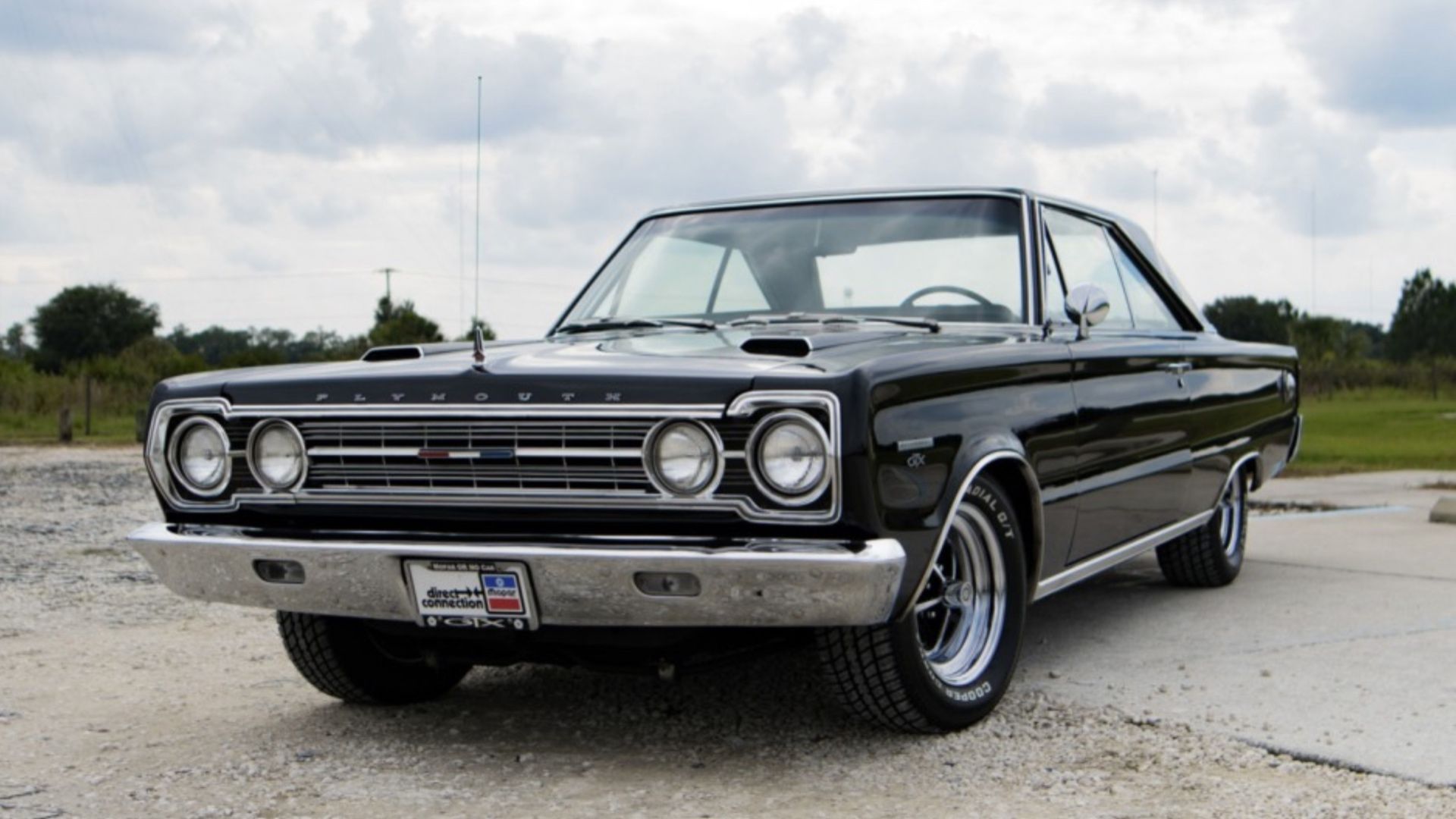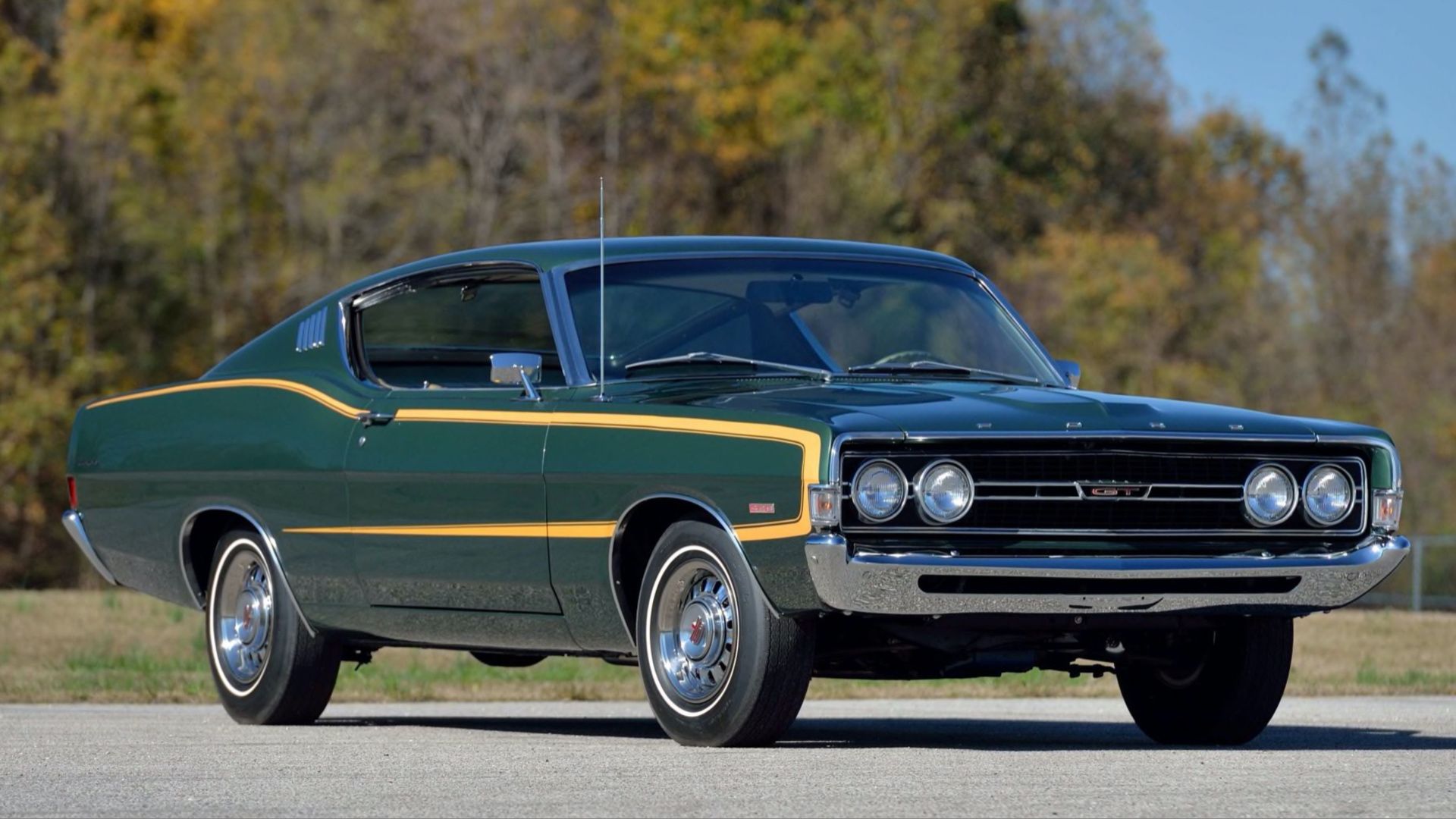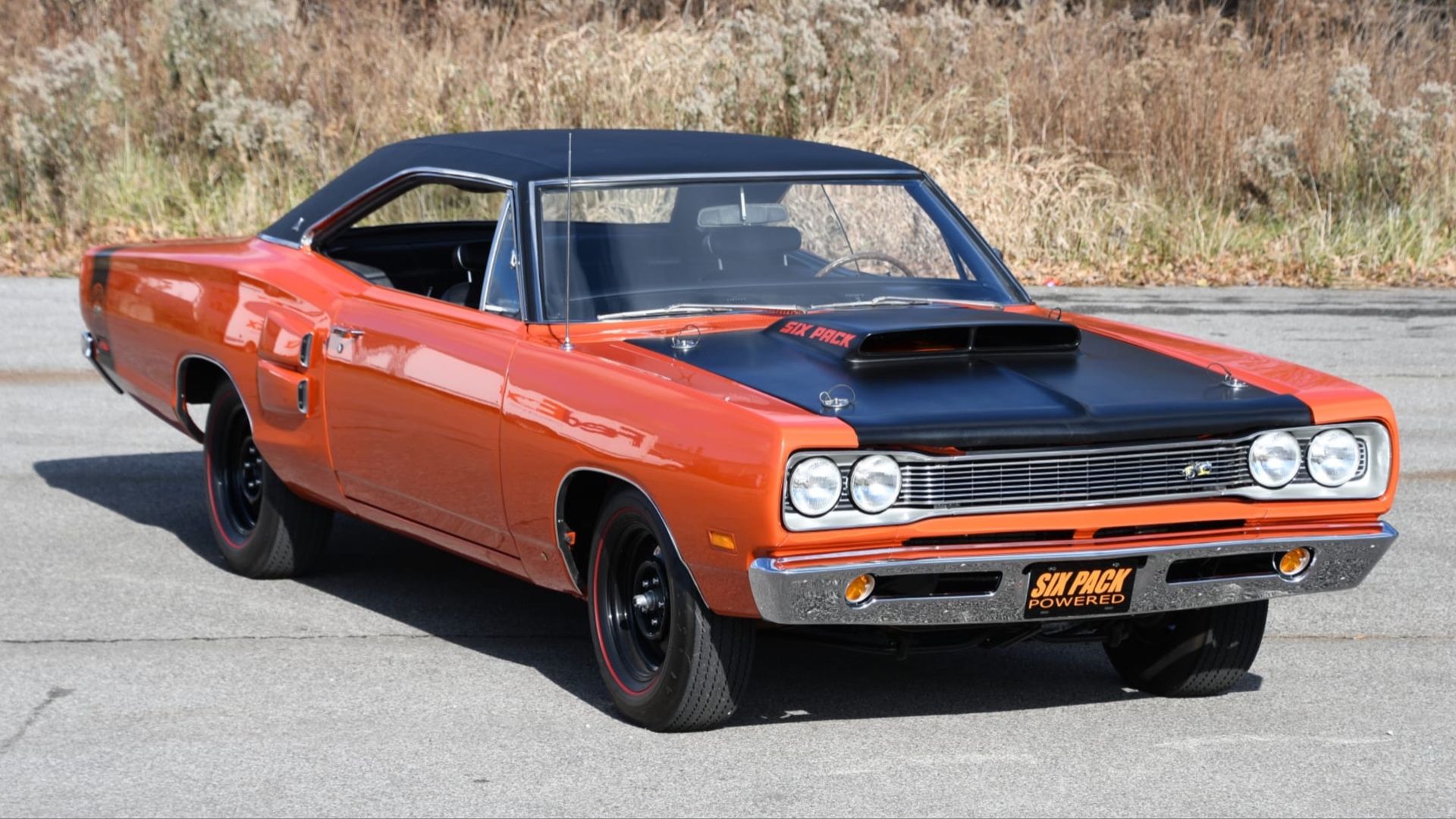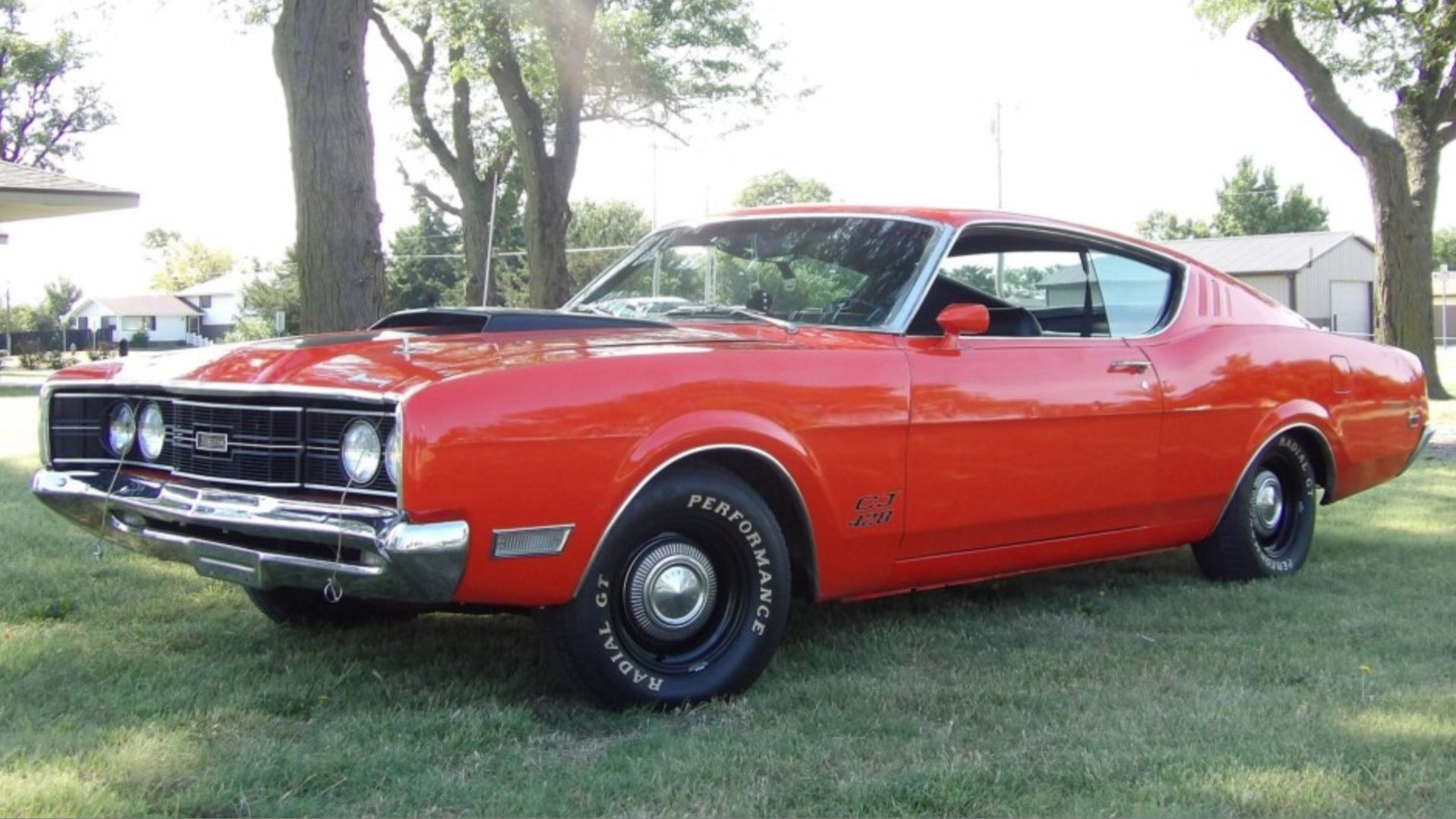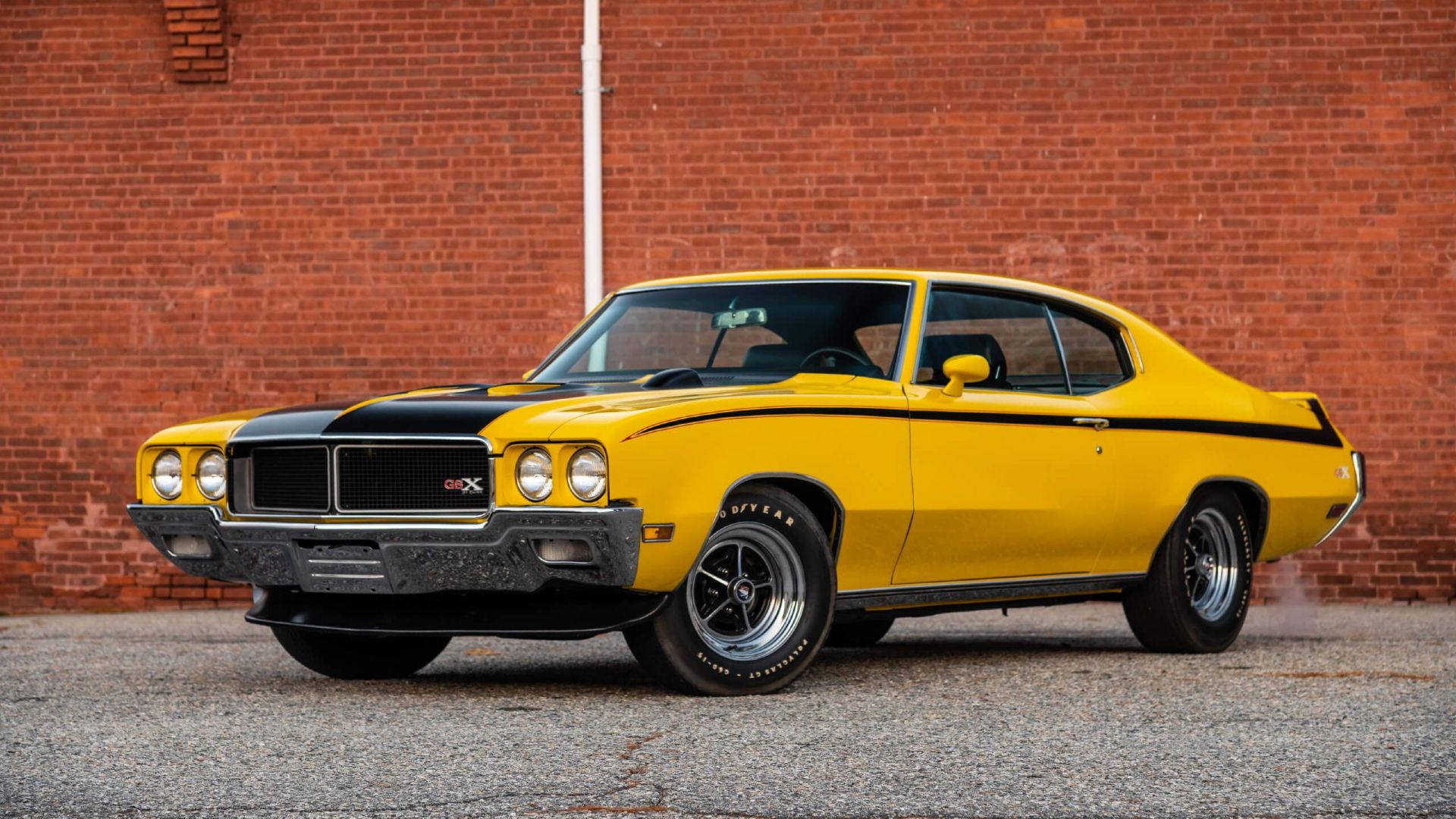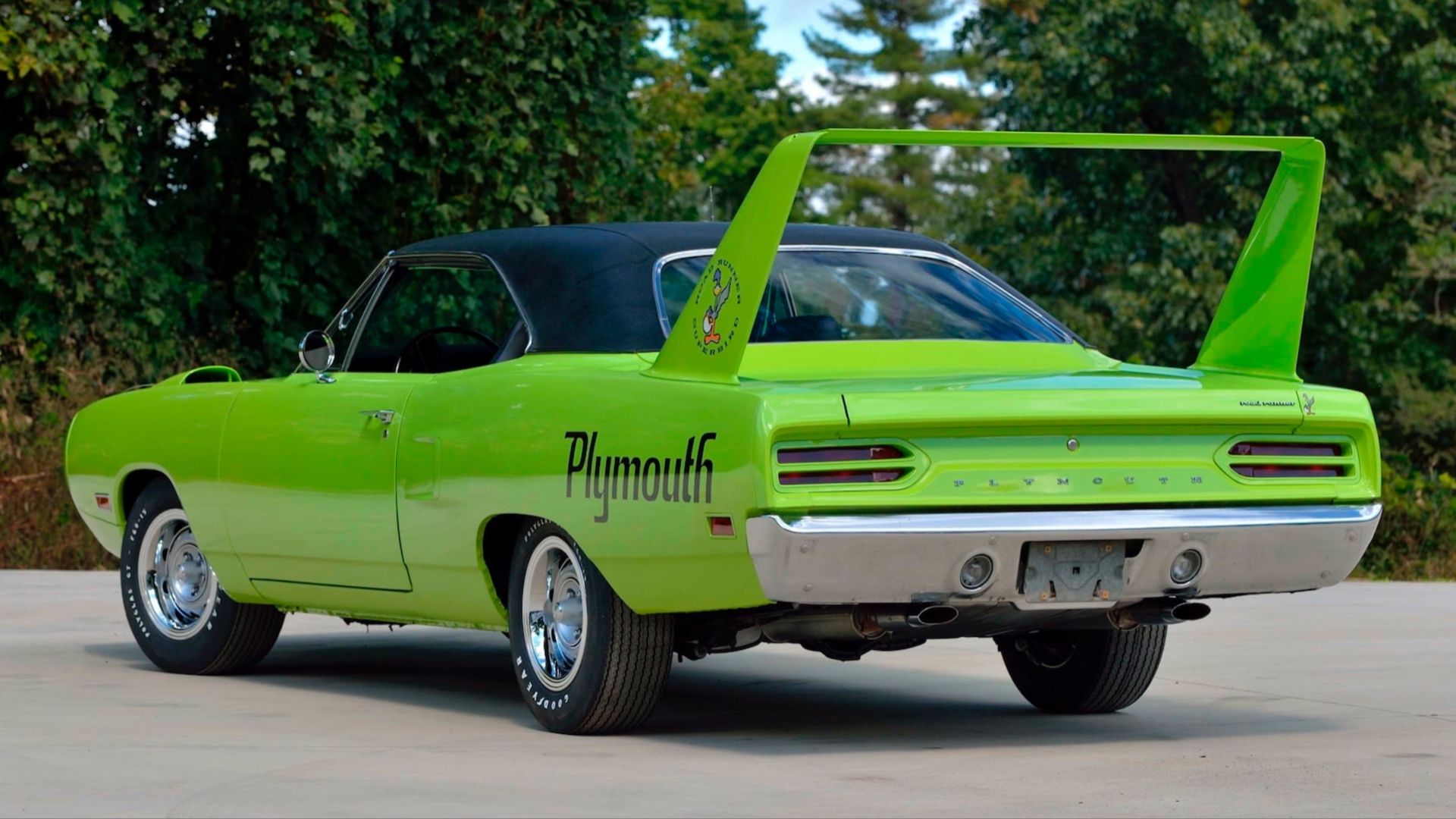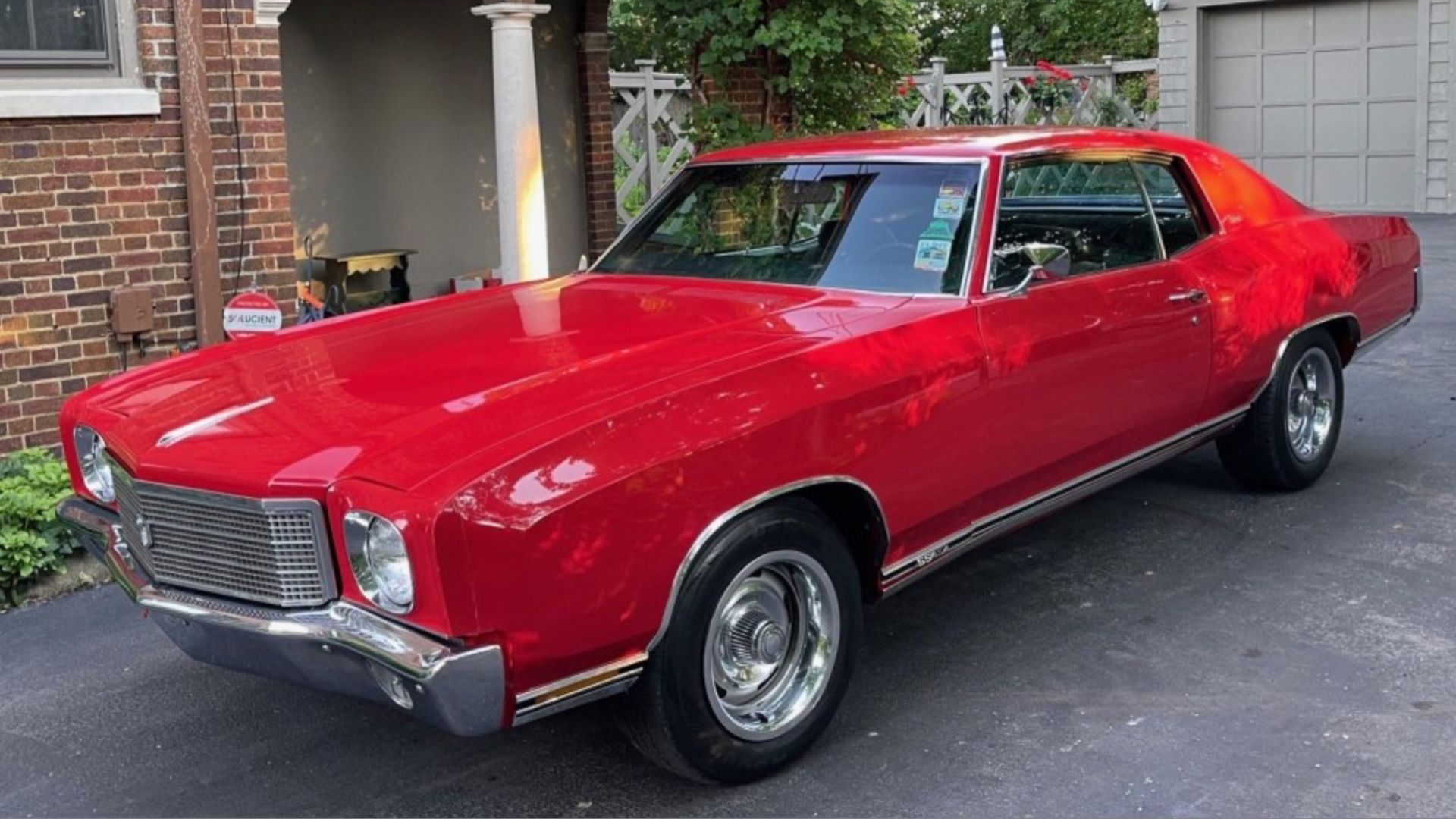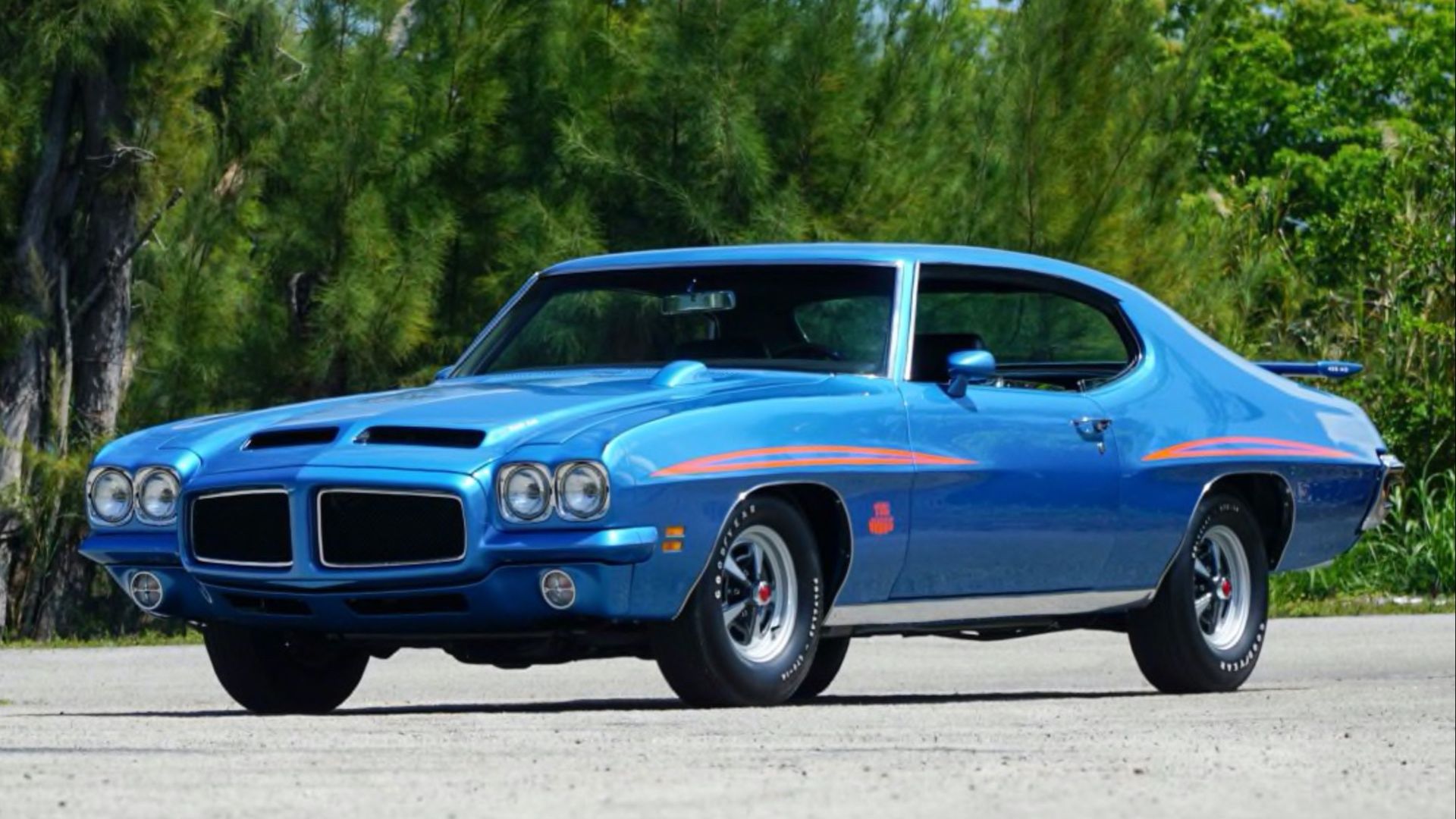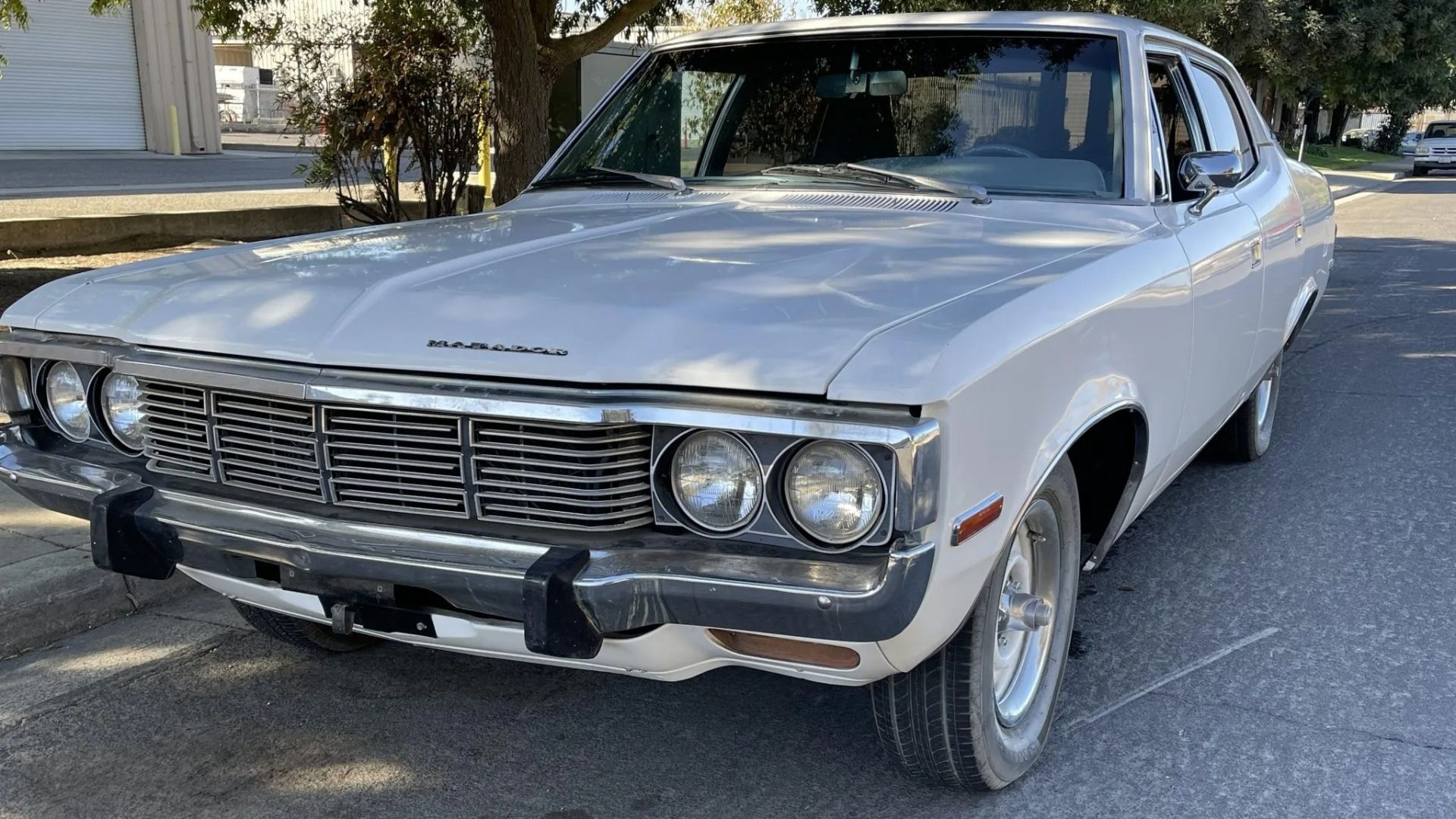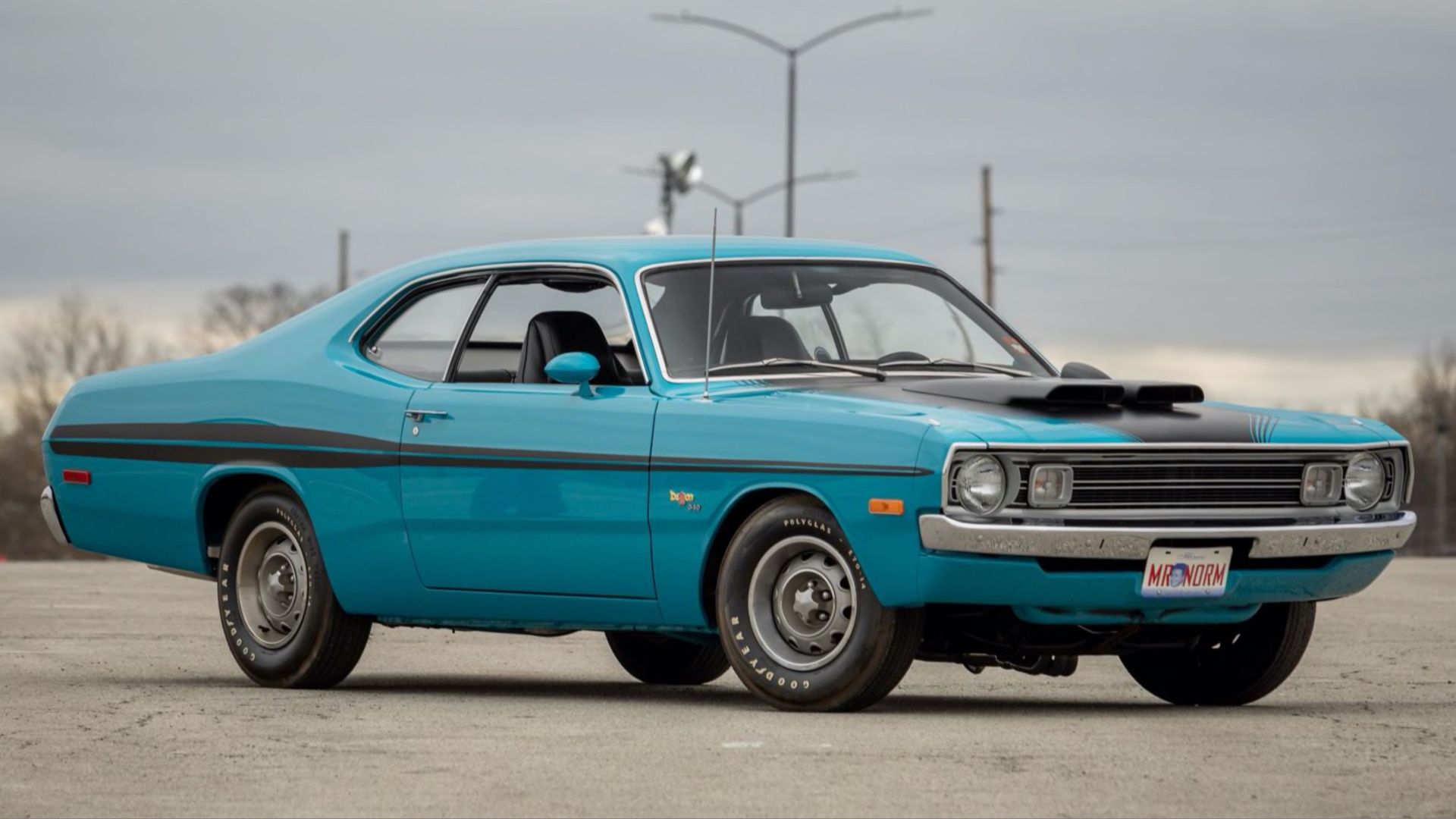Ford Mustangs, Chevrolet Camaros, and Dodge Chargers, albeit in EV form, are still made to this day and are the most enduring muscle cars with roots in the classic era. Most casual car fans have heard of these models, and maybe even Pontiac GTOs, Ford Fairlanes, and Plymouth Barracudas. Serious gearheads however know there are a whole slew of more obscure vintage performance rides that were every bit as awesome and important to the muscle car class.
The classic era of American muscle cars, from 1964 to 1973, was a magical time when the Big Three and AMC were at their most creative in packing cars with performance and cool styling. There were of course many runaway hit models, and just as many lesser-known, but no less killer, rides that every fan should know. Even among the popular cars, there were cool variants and special editions that didn’t gain as much attention at the time but deserved a little love.
Pre-1964 GTO proto-muscle cars like the Oldsmobile Rocket 88 and the Studebaker Golden Hawk are also in need of some recognition, which Top Speed has covered nicely with The Definitive History Of American Muscle. This list, on the other hand, is dedicated to glorious Golden Age muscle cars that for unknown reasons were never as popular as the superstar Blue Ovals, Bowties, and Mopars. With vintage muscle cars getting more expensive and harder to find, here are some sweet rides that shouldn’t be overlooked.
This list covers lesser-known models from the accepted classic era of muscle cars (1964-1973) that should have been more successful. Performance data was sourced from the Automobile Catalog and Horsepower Memories. The muscle cars on this list have been arranged from oldest to the newest model years.
10 1967 Plymouth GTX
The Classy Road Runner
Many of the classic Mopar muscle cars, that were famous for their massive horsepower, actually came standard with small V-8s or even V-6s. The Plymouth Belvedere GTX, introduced in 1967, however, had a 440 in the base model, with a 426 Hemi option, which is how things should be done. Originally offered as a Belvedere variant, it eventually became its model and was positioned as an upscale version of the stripped-down Road Runner.
Power and Performance
|
Engine |
426 Hemi V-8 |
|
Engine Output |
425 horsepower, 490 pound-feet of torque |
|
Transmission |
Four-speed manual |
|
0-60 Time |
4.8 seconds |
|
Quarter-mile |
13.5 seconds |
|
Top Speed |
135 mph |
(Performance specs sourced from Automobile Catalog)
Marketed by Plymouth as the “gentleman’s muscle car” it was anything but polite on the street or the track, and was more of a savage beast. With the optional Hemi engine, the GTX was one of the fastest Mopars of the classic era, that devoured Fords and Chevys before demanding seconds. While not as well known as other Plymouths like the Barracuda, the GTX was an important part of muscle car history.
9 1968 Ford Torino GT
NASCAR Street Racer
Most people think of Mustangs as being Ford’s performance contribution to the classic era of muscle cars and probably also associate the Torino nameplate with the massive land yachts of Starsky and Hutch fame. The truth is, the Torino was a badass mid-size street machine that ended up being Ford’s platform for NASCAR racing.
Power and Performance
|
Engine |
428ci Cobra Jet V-8 |
|
Engine Output |
335 horsepower, 445 pound-feet of torque |
|
Transmission |
Four-speed manual |
|
0-60 Time |
6.2 seconds |
|
Quarter-mile |
14.7 seconds |
|
Top Speed |
122 mph |
(Performance specs sourced from Automobile Catalog)
Hall of Fame racer, David Pearson, took home the 1968 NASCAR Cup Series championship behind the wheel of a ’68 Ford Torino, winning 16 races that season. He did it again in 1969, which may have triggered Richard Petty, a long-time Plymouth driver, to jump ship, if only briefly, to Ford. The 1968 Torino GT not only had a monster engine, but its beefy suspension made it one of the best-handling muscle cars of the time.
8 1969 Dodge Super Bee
The Joe Six-Pack of Muscle Cars
The Chrysler 426ci V-8 is the ultimate Mopar muscle car engine, but the 440 Six-Pack is so emotionally linked to the Dodge Super Bee that anything else under that scooped fiberglass hood would seem weird. In mid-1969, Dodge introduced the A12 package, exclusive to the Super Bee that had the 440ci V-8 with an aluminum intake manifold and three two-barrel Holley carbs, which is where the Six-Pack comes from.
Power and Performance
|
Engine |
440ci V-8 Six-Pack |
|
Engine Output |
390 horsepower, 490 pound-feet of torque |
|
Transmission |
Four-speed manual |
|
0-60 Time |
5.1 seconds |
|
Quarter-mile |
13.6 seconds |
|
Top Speed |
112 mph |
(Performance specs sourced from Automobile Catalog)
The Super Bee was a Coronet variant made from 1968 to 1970, before its final classic era year as a Charger trim. It was Dodge’s answer to the Plymouth Road Runner, as a stripped-down no-frills street performer. The A12 Super Bees didn’t even come with mag wheels, just black steel wheels with no coverings, because this wasn’t a car that was about pleasing the senses, it was made to offend them with its raw power.
7 1969 Mercury Cyclone Cobra Jet
The Mustang Killer
Despite making some killer performance rides in the late ’60s and early ’70s, Mercury never got a reputation as a major player in the muscle car game. The red-headed stepchild of the Ford family cranked out some impressively fast rides with their Comets and Cyclones but was always overshadowed by their parent company. The 1969 Cyclone ranks as the all-time most underappreciated car in Mercury history.
Power and Performance
|
Engine |
428 Cobra Jet V-8 |
|
Engine Output |
335 horsepower, 440 pound-feet of torque |
|
Transmission |
Four-speed manual |
|
0-60 Time |
6.2 seconds |
|
Quarter-mile |
13.86 seconds |
|
Top Speed |
132 mph |
(Performance specs sourced from Horsepower Memories)
With a Ram Air hood scoop and a 428 Cobra Jet engine, the ’69 Cyclone CJ was capable of smoking just about anything Ford had to offer, including the Mustang Boss 302 and even the Mach 1. It had an aggressive stance, plus plenty of chrome and stripes to make it one of the cooler-looking rides under the Blue Oval umbrella. It however couldn’t break out from the shadow of Ford and only 2,175 were made in its single year of production.
6 1970 Buick GSX 455 Stage 1
Stage Fright
The Buick GSX was a performance package of the Gran Sport, which itself was a performance version of the Skylark, that came with a Stage 1 performance package in 1970. For those keeping track at home, that’s three steps up from a base Skylark and the absolute legal limit to how many times the word “performance” can be squeezed into a single sentence.
Power and Performance
|
Engine |
455ci V-8 |
|
Engine Output |
360 horsepower, 510 pound-feet of torque |
|
Transmission |
Four-speed manual |
|
0-60 Time |
5.7 seconds |
|
Quarter-mile |
14.3 seconds |
|
Top Speed |
135 mph |
(Performance specs sourced from Automobile Catalog)
The 1970 GSX Stage 1 came standard with a 455ci V-8, which is the ultimate base-model powerplant. It was only available in Apollo White and Saturn Yellow, but came with every Buick option available, making it the most well-equipped muscle car of the classic era. It was Buick’s answer to the Chevy Chevelle SS, Pontiac GTO Judge, and Oldsmobile 442 W-30, which all pretty much the same car, but never got as much love as its GM cousins.
5 1970 Plymouth Superbird
Sad Wings of Destiny
It seems weird that a car with a giant flying wing on the back and a cartoon Road Runner bird on it would be overlooked, but the 1970 Plymouth Superbird was created in the shadow of the Dodge Charger Daytona. Designed to dominate NASCAR, and sold to the public in limited numbers to meet homologation requirements, both the Daytona and the Super Bird were so fast they got banned from the racing circuit.
Power and Performance
|
Engine |
426 Hemi V-8 |
|
Engine Output |
425 horsepower, 490 pound-feet of torque |
|
Transmission |
Four-speed manual |
|
0-60 Time |
4.8 seconds |
|
Quarter-mile |
13.5 seconds |
|
Top Speed |
160 mph |
(Performance specs sourced from Horsepower Memories)
The Daytona came first in 1969, which is why it gets most of the attention, but it was the Super Bird that crushed the competition in NASCAR. Richard Petty came back to drive for Plymouth specifically to get behind the wheel of the Super Bird. As bizarre as it sounds now, the Super Bird did not resonate with the public and many of the 1,920 winged Plymouths ever built sat unsold on dealer lots for years.
4 1970 Chevrolet Monte Carlo SS
Budget Bowtie Beast
The Chevrolet Monte Carlo, like the Ford Torino, is more associated with its pimped-out luxury late 1970s version than a serious muscle car. The 1970 Monte Carlo SS was one of the baddest things on the road in the classic era but was tragically slept on, maybe in part because its name doesn’t sound as blistering fast as a Camaro or Firebird.
Power and Performance
|
Engine |
454ci V-8 |
|
Engine Output |
450 horsepower, 500 pound-feet of torque |
|
Transmission |
Three-speed automatic |
|
0-60 Time |
5.4 seconds |
|
Quarter-mile |
13.8 seconds |
|
Top Speed |
116 mph |
(Performance specs sourced from Automobile Catalog)
Meant to be an upscale luxury performance ride like the Pontiac Grand Prix, only 3,823 454-equipped SS cars were ever sold. Hagerty calls the first-gen muscle cars a steal, noting, “Monte Carlos remain bargains that offer more muscle and style per dollar than many of their peers.” An excellent condition ’70 Monte Carlo SS can be found for $34,100, versus a 1970 Chevelle SS 454 which goes for more than double that price.
3 1971 Pontiac GTO Judge
Judge, Jury, and Executioner
The Pontiac GTO started the classic muscle car era craze in 1964 and is hardly an obscure car. Even the Judge trim is fairly well-known outside of hardcore enthusiast circles, but the 1971 version makes the list because, despite its awesomeness, nobody bought it. The 1971 GTO Judge came with the 455 High Output engine and a killer graphics package, yet only 357 hardtops and 17 convertibles were ever sold.
Power and Performance
|
Engine |
455ci V-8 |
|
Engine Output |
355 horsepower, 480 pound-feet of torque |
|
Transmission |
Three-speed manual |
|
0-60 Time |
5.9 seconds |
|
Quarter-mile |
14.9 seconds |
|
Top Speed |
125 mph |
(Performance specs sourced from Automobile Catalog)
Sale figures were so bad that Pontiac stopped taking orders on them mid-year and discontinued the Judge trim altogether. The thing is, GTOs were never all that fast, mostly due to GM’s infamous big engine ban on its mid-sized cars. In 1970, GM lifted that ban, and all of their brands started shoehorning 455s and 454s into their muscle cars. With the 1971 Judge, there was finally a street-worthy GTO and nobody cared.
2 1971 AMC Matador
No Bull AMC Muscle
AMC made some cool budget muscle cars in the classic era, but most of them were compact and even sub-compact rides. They also never put an engine bigger than 360 cubic inches of displacement. The 1972 Matador with the Machine Go package was a mid-size coupe that came with the newly-introduced 401ci engine, making it the first AMC muscle car to hit all the parameters of the definition.
Power and Performance
|
Engine |
401ci V-8 |
|
Engine Output |
330 horsepower, 430 pound-feet of torque |
|
Transmission |
Four-speed manual |
|
0-60 Time |
6.0 seconds |
|
Quarter-mile |
14.7 seconds |
|
Top Speed |
116 mph |
(Performance specs sourced from Automobile Catalog)
Granted, a 401 isn’t a 426 Hemi or an LS5 454, but it finally broke AMC out of the doldrums of the 300s. The ’71 Matador with the Machine Go package was a replacement for the awesome Rebel Machine, which was a total flop, and in turn, failed itself. Only around 50 Matadors with the 401ci Machine Go package were ever sold, making it the rarest factory-production AMC muscle car.
1 1972 Dodge Demon
The Devil’s Dodge
Mopars dominated the streets, tracks, and the entire classic era of muscle cars with 426 Hemis and 440 Six-Packs, but they made some cool rides with 340s like the Plymouth AAR ‘Cuda and the Challenger T/A too. It was the Dodge Demon however that captured the title of the most kickass Mopar 340 as well as the most overlooked vintage muscle car. Yes, the Demon name has gained some recognition with the recent Challenger Demon 170 Last Call car, but the original was kind of an obscure dud.
Power and Performance
|
Engine |
3401ci V-8 |
|
Engine Output |
240 horsepower, 290 pound-feet of torque |
|
Transmission |
Four-speed manual |
|
0-60 Time |
6.7 seconds |
|
Quarter-mile |
15.2 seconds |
|
Top Speed |
124 mph |
Technically a Demon is a Dodge Dart, but in reality, it is a Plymouth Duster that bears no resemblance to any other Dart models of that year or any other. Dodge was jealous of the Duster’s success, so Chrysler gifted them with their version, which they originally wanted to call “The Beaver.” The Demon was introduced in 1971, but the 1972 version got the cool metal “Demon” Fender badges and the single hood scoop. In 1972, Plymouth moved 330,393 Dusters, while only 8,700 Demon 340s were sold, making it a great rare collectible.
Credit: Source link
